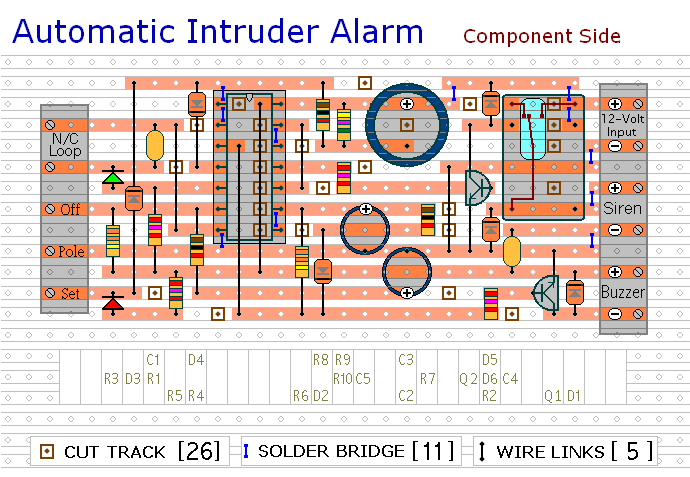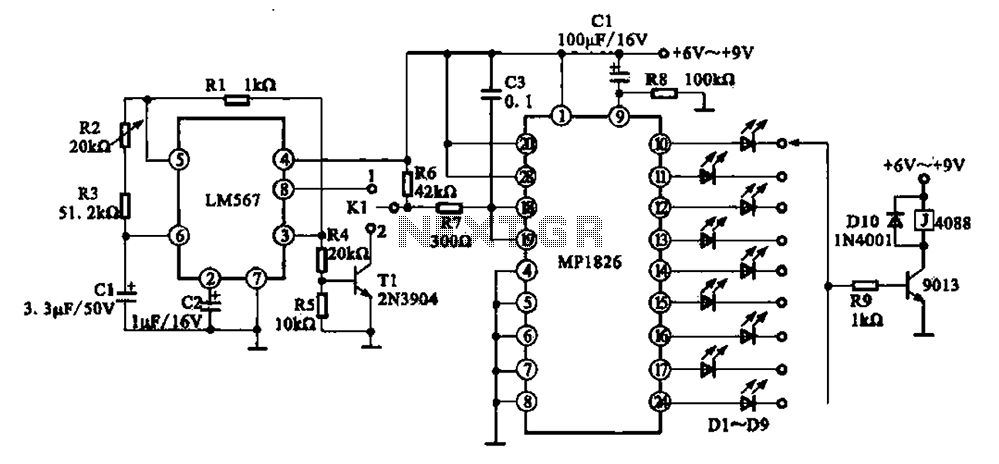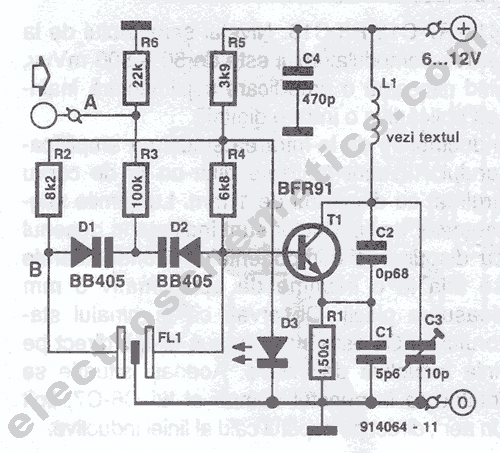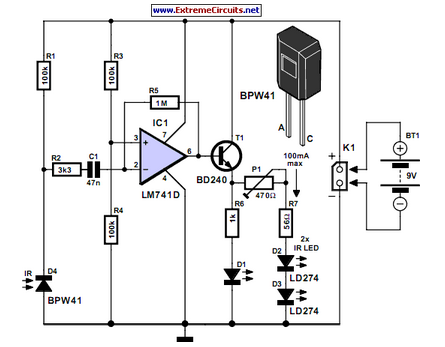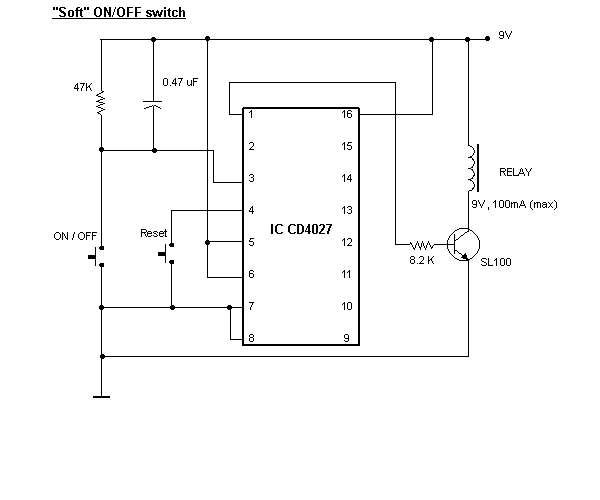
Simple 2M 6M Transverter Circuit
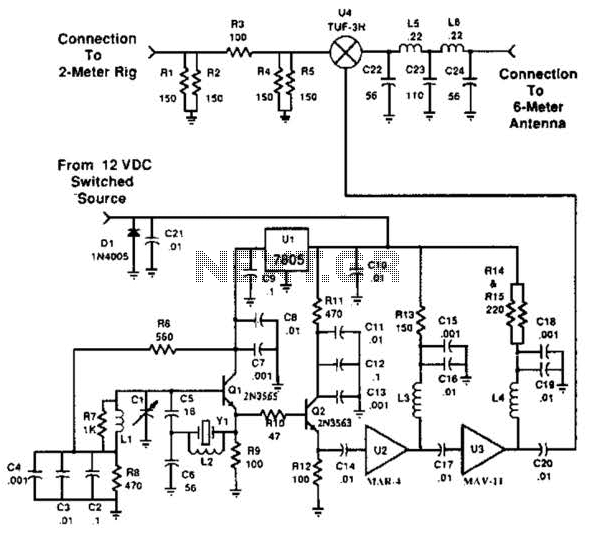
This transverter utilizes the bilateral properties of a balanced mixer to generate a 6-meter output from 2-meter inputs. The component Y1 is a 90-MHz crystal. It is important to note that the input frequency on the 2-meter band is between 143 to 144 MHz for achieving a 53 to 54 MHz output. This design choice helps to prevent the reception of unwanted signals on the 2-meter band during receive periods. If the radio equipment does not support transmission below 144 MHz, it is recommended to use a crystal frequency of 93 or 94 MHz.
The described transverter circuit takes advantage of the balanced mixer configuration to facilitate the conversion of frequency bands effectively. The balanced mixer is characterized by its ability to perform well with minimal signal distortion and interference, which is critical in maintaining the integrity of the output signal. The choice of a 90-MHz crystal oscillator (Y1) is pivotal in determining the operational frequency of the transverter.
In practical applications, the transverter will receive signals in the 2-meter band (143 to 144 MHz) and output them in the 6-meter band (53 to 54 MHz). This frequency conversion is achieved through the mixing process within the balanced mixer, which combines the input signal with the local oscillator signal derived from the crystal oscillator. The output frequency is a result of the difference between these two frequencies.
For users whose radio equipment is limited to transmitting above 144 MHz, selecting a higher crystal frequency, such as 93 or 94 MHz, allows for compatibility while still achieving the desired output frequency. This adjustment ensures that the transverter can be utilized effectively without compromising the transmission capabilities of the radio.
Overall, the transverter design emphasizes frequency management and signal integrity, making it suitable for amateur radio applications where multi-band operation is desired. Proper implementation of this circuit will enable seamless communication across different frequency bands while minimizing the risk of interference. Using the bilateral properties of a balanced mixer this transvertcr will produce 6-m output with 2-m inputs. Y1 is a 90-MHz crystal. Note that the input on 2 m is 143 to 144 MHz for 53 to 54-MHz output. This avoids possibility of extraneous 2-m reception during receive periods. If your radio will not transmit below 144 MHz, then use a 93- or 94-MHz crystal frequency.
The described transverter circuit takes advantage of the balanced mixer configuration to facilitate the conversion of frequency bands effectively. The balanced mixer is characterized by its ability to perform well with minimal signal distortion and interference, which is critical in maintaining the integrity of the output signal. The choice of a 90-MHz crystal oscillator (Y1) is pivotal in determining the operational frequency of the transverter.
In practical applications, the transverter will receive signals in the 2-meter band (143 to 144 MHz) and output them in the 6-meter band (53 to 54 MHz). This frequency conversion is achieved through the mixing process within the balanced mixer, which combines the input signal with the local oscillator signal derived from the crystal oscillator. The output frequency is a result of the difference between these two frequencies.
For users whose radio equipment is limited to transmitting above 144 MHz, selecting a higher crystal frequency, such as 93 or 94 MHz, allows for compatibility while still achieving the desired output frequency. This adjustment ensures that the transverter can be utilized effectively without compromising the transmission capabilities of the radio.
Overall, the transverter design emphasizes frequency management and signal integrity, making it suitable for amateur radio applications where multi-band operation is desired. Proper implementation of this circuit will enable seamless communication across different frequency bands while minimizing the risk of interference. Using the bilateral properties of a balanced mixer this transvertcr will produce 6-m output with 2-m inputs. Y1 is a 90-MHz crystal. Note that the input on 2 m is 143 to 144 MHz for 53 to 54-MHz output. This avoids possibility of extraneous 2-m reception during receive periods. If your radio will not transmit below 144 MHz, then use a 93- or 94-MHz crystal frequency.

